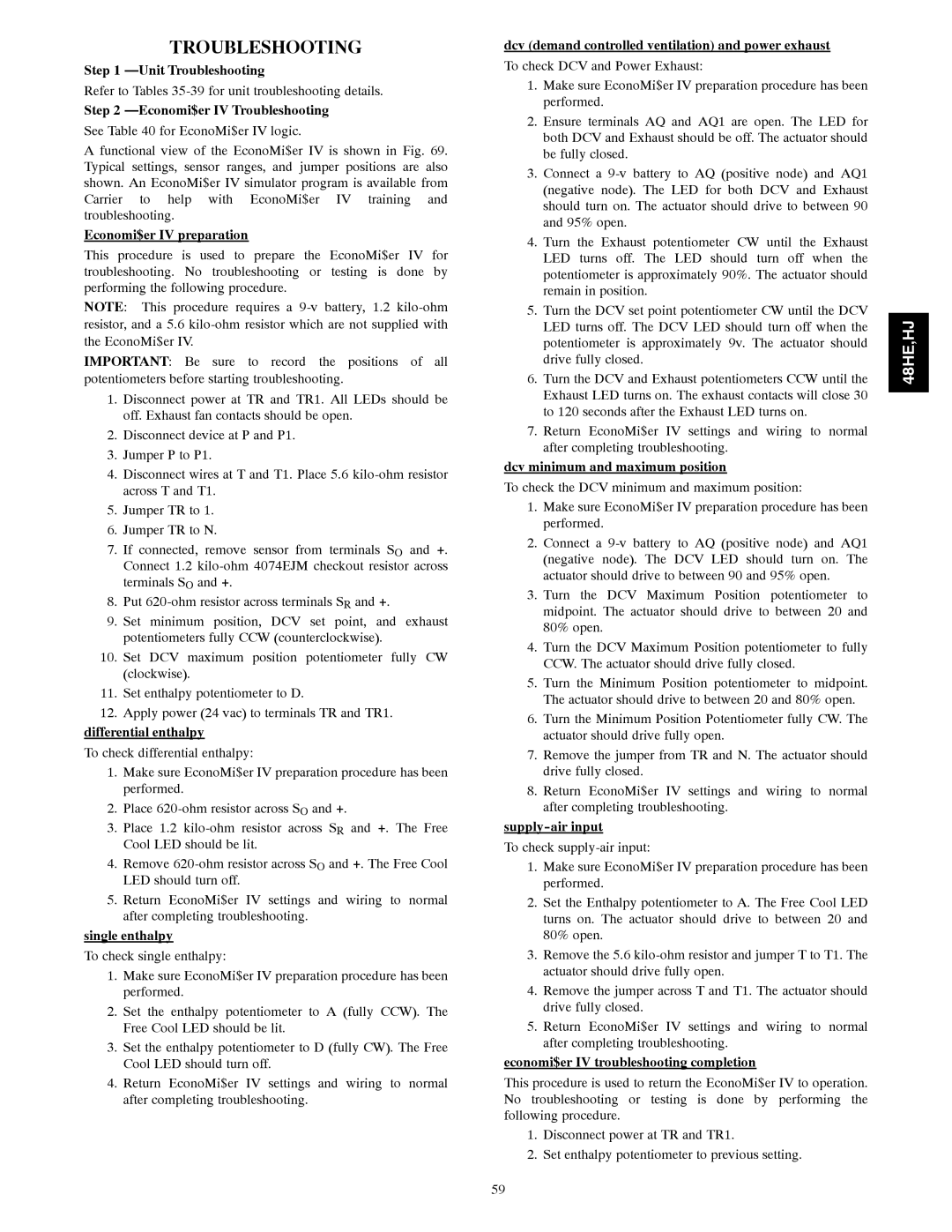48HJ004---007, 48HE003---006 specifications
Carrier has long been a trusted name in the HVAC industry, and its models 48HJ004---007 and 48HE003---006 continue that legacy, offering efficient, reliable climate control solutions. These models are designed for different applications, ensuring optimal performance in a variety of environments.The 48HJ series features advanced rooftop units that are ideal for commercial settings. They come equipped with high-efficiency scroll compressors that provide superior cooling and heating capabilities. This series is noted for its compact design, allowing for easy installation on rooftops or other constrained spaces. The units offer variable capacity operation, which enables them to efficiently meet varying heating and cooling demands without unnecessary energy consumption.
One of the standout features of the 48HJ series is its use of advanced microprocessor controls. This technology allows for precise temperature management and system diagnostics, enhancing the ease of operation while ensuring maximum comfort. Additionally, the series supports advanced connectivity options, enabling integration with building management systems. This allows for remote monitoring and control, making it easier for facility managers to keep track of performance and energy usage.
On the other hand, the 48HE series specializes in high-efficiency heating and cooling performance. These units are designed for larger commercial spaces and come with robust features for enhanced durability and efficiency. Like the 48HJ series, the 48HE models utilize scroll compressors and are equipped with a high-efficiency fan setup for improved airflow and reduced noise levels.
The 48HE also includes an innovative heat pump option, which allows the system to reverse the cooling process to provide heating, making it versatile across different seasonal demands. Both series are designed with eco-friendly refrigerants that comply with the latest environmental regulations, ensuring a minimized ecological footprint.
In terms of energy efficiency, both the 48HJ and 48HE series hold impressive SEER and EER ratings, contributing to reduced operational costs over time. The units are also built with durable, corrosion-resistant materials, ensuring longevity and low maintenance needs.
In conclusion, Carrier 48HJ004---007 and 48HE003---006 models are designed with cutting-edge technology, energy efficiency, and flexibility in mind. Their robust features make them ideal choices for commercial applications, providing reliable comfort and operational excellence. Whether for cooling or heating, these systems stand out in performance and sustainability, earning Carrier's reputation as a leader in the HVAC market.

